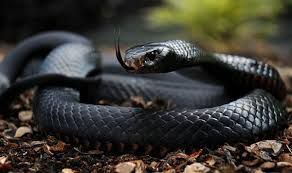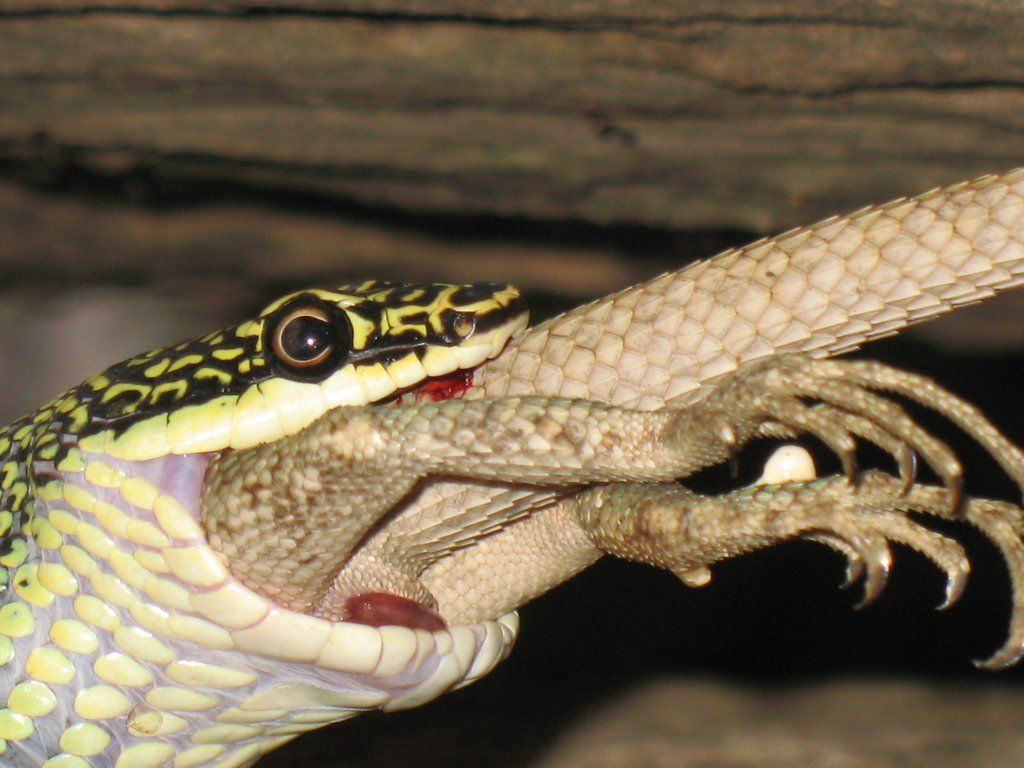The most interesting things about amphibians
Amphibians are animals that live both in water and on land. These include frogs, toads, newts and salamanders. Amphibians lay their eggs in water, such as a pond or stream. They cannot live in salt water, so they are not found in the seas. Newts and salamanders are amphibians. Unlike frogs and toads, they do not lose their tail when they grow up. Newts are more attached to water than other amphibians. They are almost entirely aquatic animals.
Not quite lizards
Newts and salamanders look like lizards, but they are not reptiles, but amphibians. Their life begins and usually spends almost all of it in water. Newts live in temperate climates and in the winter they crawl under logs and rocks and hibernate. Salamanders live in warmer climates and do not need hibernation.
The largest salamander
The giant salamander is the largest amphibian animal, its length is up to 1.8 m.
Newts are handsome
The males of many newts are very beautiful. They become especially bright and beautiful during the mating season, when they need to attract the attention of females. The crested newt has a bright orange or yellow belly, and a large, uneven crest running along its entire back. There are three species of newts in Russia - common, crested and Asia Minor.
Caring for offspring
The female newt protects the eggs from predators by hiding them or wrapping them in the leaves of aquatic plants.
Fire salamander.Fire salamanders get their name because they usually hide under logs, and they have to quickly jump out of the fire if they accidentally get there along with firewood.
Frogs and toads
Poison dart frogs live in the Amazon forests. Their skin secretes poison that is deadly to animals and humans. The bright color of the frog warns that it is poisonous. The Indians used frogs to make poisoned arrows.
Tropical forest tree frogs live far from bodies of water, but they still prefer damp places.
Skin breathing. Most frogs breathe not only through their lungs, but also through their skin, so their skin must be kept moist at all times. Frogs are excellent swimmers and usually live near water, except for tree frogs.
Jumping frogs
The frog's powerful hind legs help it jump far and high. Toads usually do not jump, but walk. Adult frogs and toads do not have tails.
The largest and smallest frog.
The largest frog is the goliath frog from West Africa. It weighs up to 3 kg, and the length of the extended frog is almost 80 cm. The smallest frog lives in Brazil. Its length is only 8.5 mm.
Flying frogs
Some tree frogs can glide in the air. They have suction cups on their toes, and between their toes there are membranes that act like spread wings.
Toads
Toads generally have drier skin than frogs. The skin of toads is covered with warts and can be poisonous. The hind legs of toads are shorter than those of a frog, and the toad usually walks rather than jumps. Toads are usually less mobile than frogs.
In dad's mouth. A male Darwin's frog from Chile carries the female's eggs in his mouth until the tadpoles hatch.
Amphibians
Amphibians, or amphibians, usually spend part of their lives in water and part on land. The very name “amphibian” means “living a double life.” Amphibians were the first vertebrates to move from water to land almost 400 million years ago. More than 4,500 species of amphibians are now known. Amphibians include frogs, toads, newts, and salamanders. Most often, baby amphibians hatch from eggs in water. At first they look like fish fry, but soon they grow legs and develop lungs for breathing air. A little more - and the animals are ready to go to land, where they usually spend almost their entire adult life. But amphibians do not go far from the water and always return to the water to lay eggs (spawn).
The most interesting things about amphibians
The sounds made by a barking tree frog are, as its name suggests, the barking of a dog, with various variations consisting of about a dozen sounds. Both males and females of this species bark. The frog's "bark" is born in the throat sacs. Usually invisible, when “singing” these bags swell almost to the size of the frog itself.
Frog - bull
The bullfrog lives in North America, reaches a length of twenty centimeters and weighs about seven hundred grams. These frogs are true predators: they feed on invertebrates, small fish and frogs, and sometimes even waterfowl chicks. Males, especially during the mating season, make loud, bull-like sounds that can be heard for a mile or more. Gourmets appreciate the tender meat of the hind legs of the bullfrog, a pair of which weighs almost four hundred grams. In the USA, these large amphibians are bred on several farms.
Studying amphibians, scientists discovered their remarkable navigational abilities, the ability to navigate by the sun, moon and stars. In North America there lives a noisy frog (an adult reaches a length of seven centimeters), which, if it finds itself in an unfamiliar place, having orientated itself on the area and choosing the right direction in a short time, sets off and unmistakably finds its habitat.
As you know, the body of tailless amphibians is covered with bare, unprotected skin. However, in 1900, hairy frogs were discovered in Gabon (Central Africa). As a result of their study, it became clear that the “fur” of frogs is just additional outgrowths of the skin that produce mucus, which helps maintain body moisture, especially necessary for amphibian species living in hot climates.
Frogs - females make sounds if they are injured, but the loud croaking heard at night is the song of exclusively males. The main goal of their concerts is to attract the attention of females during the mating season. But even after this period they perform their guttural songs.
The red-eyed tree frog, its body length reaches seven centimeters, belongs to the phyllomedusa genus, settles near water bodies, mainly in forests. These amphibians are diurnal. They look with unusual red eyes, the lower eyelids of which are covered with a mesh pattern. When danger approaches, these emerald-colored beauties close their eyes and turn invisible against the backdrop of bright green foliage, for which they are often called ghost frogs. The red-eyed tree frog has tenacious paws, the first toe of which is opposed to the others, which allows it to deftly grasp tree branches. The female, larger than the male, having placed the partner she likes on her back, climbs, like a real steeplejack, with him into a tree, to a height of up to seven meters. They move on smooth surfaces with the help of special suction cups located on their fingers. A sticky liquid secreted from the fingertips, as well as from special glands in the throat and abdomen, allows tree frogs to better stay on the surface.
The blue dart frog (its body length is about four centimeters) can only be found in southern Suriname, in forests near streams. It is dark sapphire in low light, but in bright light it literally phosphorescent. Meanwhile, this dandy of amazingly beautiful color is far from harmless. The skin of the rare blue dart frog produces a very strong poison, which makes it extremely dangerous for large animals and humans.
The paint frog, measuring approximately four centimeters, lives in Central and South America, from Nicaragua and Costa Rica to southeastern Brazil and Bolivia. It usually settles in the lower tier of a damp forest, in old trees with small hollows and crevices at the base of the trunk. These amphibians secrete a special mucus that, if you smear it on the skin of parrot chicks, for example, will cause them to grow red feathers instead of green. It is also interesting that the mucus contains epibatidine, a powerful pain reliever. It is two hundred times more effective than morphine and does not cause negative side effects.
The tree frog is a cocked hat, body length is almost ten centimeters, an extremely rare frog of the marsupial tree frog family, lives in South America. Its protective coloring makes it look like a piece of tree bark or lichen, so against the background of trees and stones this frog becomes completely invisible. Taking care of the offspring, the female carries fertilized eggs in a special leather pocket, which is located on her back.
It is frogs that produce the strongest poisons in nature. The record holder for “poisonousness” is the Colombian ucoqui leaf frog. The toxicity of this baby's venom, which is many times greater than that of a snake, retains its strength for several years. The Indians rubbed the tips of their arrows with it; one frog was enough to make fifty poisoned arrows. Once in the blood, the ucoca poison kills a person within a few minutes. the same substances also have bactericidal properties, thanks to which frogs destroy harmful microorganisms that fall on their skin. In the old days, frogs were placed in containers with milk to prevent it from souring: their poisonous mixture suppressed the growth of lactic acid bacteria, and the milk remained fresh.





No comments here yet.